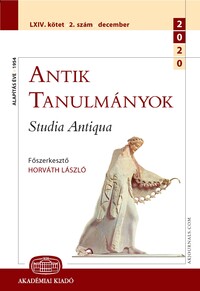Adalékok Janus Pannonius De stella aestivo meridie visa című elégiájának értelmezéséhez
Additives for the interpretation of Janus Pannonius's elegy De stella aestivo meridie visa
Author(s): Lajos Zoltán SimonSubject(s): Cultural history, Hungarian Literature, 15th Century
Published by: Akadémiai Kiadó
Keywords: Janus Pannonius; Calpurnius Siculus; Claudius Claudianus; Tito Vespasiano Strozzi; Matteo Maria Boiardo; humanist elegy; bucolic poetry; ancient and Renaissance astrology
Summary/Abstract: So far there is no unanimity among researchers concerning the identification of the celestial body appearing in Janus Pannonius’ elegy De stella aestivo meridie visa. János Bollók identified it with the comet observed in China in the summer of 1462. However, his view was not generally accepted, and recent studies on the elegy have argued for an identification with the planet Venus. Based on the analysis of literary parallels so far left out of consideration, in our paper we claim that the description aimed to depict a comet. We examine the similar description found in Tito Vespasiano Strozzi’s epic poem Borsias and show that his astrological views on comets with a beneficial influence were the same as that of Janus. This is further supported by the expressions taken over from Janus in the eclogues of Matteo Maria Boiardo. Researchers have also neglected the beneficial comet in Eclogue I of T. Calpurnius Siculus. Based on the examination of textual parallels we aim to prove that this eclogue was an important model for the elegy of Janus – its influence can not only be detected in the description of the comet but also in the invocation in the elegy alluding to motives of the Golden Age.
Journal: Antik Tanulmányok
- Issue Year: 65/2021
- Issue No: 2
- Page Range: 235-247
- Page Count: 13
- Language: Hungarian

